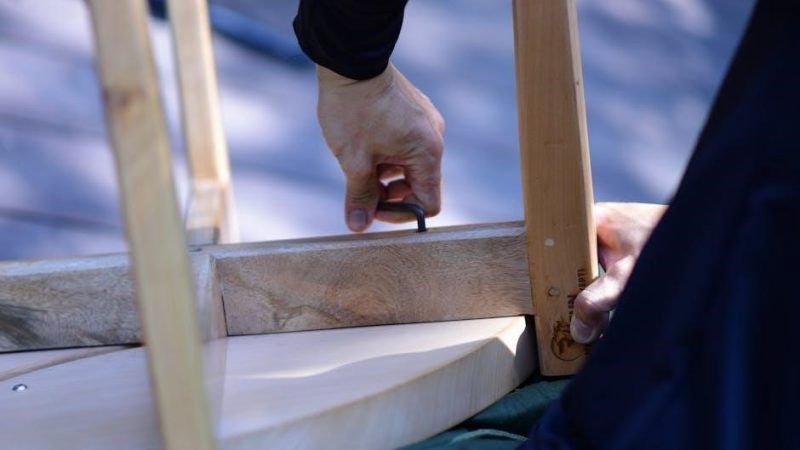craftsman garage door opener 3 4 hp manual
Craftsman 3/4 HP Garage Door Opener Manual⁚ A Comprehensive Guide
This guide provides a complete overview of your Craftsman 3/4 HP garage door opener. It covers safety precautions, installation, programming remotes, troubleshooting common problems, maintenance, and accessing online resources. Find model-specific information and parts lists for efficient operation and repair.
Finding Your Craftsman Garage Door Opener Manual
Locating your Craftsman 3/4 HP garage door opener manual is crucial for safe and efficient operation. First, check the original packaging; the manual is often included within the box. If the original packaging is unavailable, thoroughly examine the garage door opener itself; sometimes, a small sticker with a model number and a website for manuals is affixed to the unit. Next, consult your home’s filing system or storage areas where you typically keep appliance manuals. A quick search within these locations might reveal the manual. If unsuccessful, turn to online resources. Sears Parts Direct is an excellent starting point. Their website provides parts diagrams, manuals, and troubleshooting guides for various Craftsman appliances. Simply input your model number (located on the opener) to locate the appropriate manual. Alternatively, you can search directly via online search engines such as Google, Bing, or DuckDuckGo using search terms like “Craftsman 3/4 HP garage door opener manual” plus the model number to locate various sources for digital copies.
Identifying Your Model Number and Specifications
Correctly identifying your Craftsman 3/4 HP garage door opener’s model number and specifications is paramount for accessing the right manual and troubleshooting potential issues. The model number is usually a combination of numbers and letters, often found on a sticker located on the opener itself. This sticker might be on the motor housing, the side panel, or the ceiling mount bracket. Carefully examine all sides of the opener to find this crucial identifier. Once you’ve located the model number, note down the complete sequence. This model number is vital for accessing the correct manual online and ordering replacement parts. In addition to the model number, other important specifications to identify include the horsepower (HP), which is stated as 3/4 HP in your case. Note the type of drive mechanism – chain drive, belt drive, or screw drive – as this information can be helpful for troubleshooting and maintenance. The frequency of the remote control, often 315 MHz for Craftsman openers, is another important specification. Also note the voltage requirements for the opener; this is typically 120V, 60 Hz. Recording these details will streamline any future interactions with Craftsman support or when searching for parts or information online. Keep this information readily accessible for future reference.
Accessing Online Manuals and Resources
Locating your Craftsman 3/4 HP garage door opener manual online is straightforward, leveraging readily available resources. Begin by visiting the official Craftsman website. Their support section usually features a comprehensive database of manuals, searchable by model number. Input the model number you previously identified, ensuring accuracy to avoid retrieving the wrong document. If the Craftsman website doesn’t immediately yield results, consider exploring alternative online resources. Sears Parts Direct, a frequently cited source, maintains a vast library of manuals for various Craftsman appliances and tools. Their site offers a similar search function based on model numbers. Remember to double-check the model number against the opener before downloading any document. Online forums dedicated to DIY home repairs and appliance maintenance can be invaluable. These communities often share user manuals, troubleshooting tips, and repair guides. Search for your Craftsman model number within these forums; other users may have already uploaded or linked to the relevant manual. If you still face difficulties, consider contacting Craftsman customer support directly. They can assist you in locating the correct manual or provide alternative support channels for resolving your specific needs. Remember to always prioritize official sources to ensure the accuracy and safety of the information you access.
Understanding Safety Precautions and Warnings
Prior to commencing any work related to your Craftsman 3/4 HP garage door opener, meticulously review all safety precautions and warnings detailed within the owner’s manual. These precautions are paramount for ensuring personal safety and preventing potential injury or damage to your property. Always disconnect the power supply to the garage door opener before undertaking any maintenance, repairs, or adjustments. Failure to do so could result in serious electric shock. Never allow children to operate the garage door opener unsupervised. The powerful mechanism presents a significant risk of injury to young children who may not fully understand the potential dangers. When working near the garage door, exercise extreme caution to avoid entanglement in moving parts. The garage door opener’s mechanism can cause severe injury if fingers or limbs are caught. Regularly inspect the safety sensors located on both sides of the garage door. Ensure they are correctly aligned and free from any obstructions. Malfunctioning sensors can cause the door to close unexpectedly, leading to potential injury or damage. If you detect any damage to the garage door opener’s casing, wiring, or any other components, cease operation immediately and contact a qualified technician for repair. Operating a damaged garage door opener can be hazardous and may exacerbate existing problems. Familiarize yourself with emergency stop procedures, allowing you to swiftly halt the garage door’s operation in case of unexpected malfunctions or emergencies. Adherence to these safety guidelines will significantly reduce the risk of accidents and ensure safe and reliable use of your Craftsman garage door opener.
Installation Guide⁚ Step-by-Step Instructions
Before beginning the installation of your Craftsman 3/4 HP garage door opener, ensure you have all the necessary tools and components. Carefully read through the entire installation manual before starting. Begin by disconnecting the power supply to the garage door opener. This critical safety step prevents accidental operation during the installation process. Next, securely mount the opener’s motor unit to the garage ceiling or wall, following the manufacturer’s guidelines for proper alignment and support. Attach the trolley to the garage door, ensuring it’s securely fastened and aligned correctly. Connect the lift arms and chain to the trolley and the opener’s motor unit. Proper alignment and tension are crucial for smooth and efficient operation. Run the chain through the sprockets, ensuring it’s properly aligned and free from any obstructions. Connect the safety sensors to the opener’s motor unit. These sensors are crucial for preventing accidents by stopping the door if an obstruction is detected. Test the alignment and functionality of the sensors before proceeding. Connect the power supply to the opener’s motor unit, ensuring it’s securely connected and complies with all electrical safety regulations. Program your remote controls, following the instructions provided in the manual. This allows you to operate the door opener remotely. Finally, test the complete system, opening and closing the garage door several times to verify its smooth and safe operation. If any issues arise during the installation process, refer to the troubleshooting section of the manual or contact Craftsman customer support for assistance.
Programming Remote Controls and Door Controls
Programming your Craftsman 3/4 HP garage door opener’s remotes and door controls is a straightforward process, but careful attention to the instructions is crucial. First, locate the “learn” button on the opener’s motor unit. This button initiates the programming sequence. Next, hold down the “learn” button while simultaneously pressing a button on the remote control you wish to program. Release both buttons after a few seconds; the opener should acknowledge the successful pairing. Repeat this process for each remote you intend to use with the garage door opener. Some models may require a specific sequence or timing for successful programming. Consult your owner’s manual for precise instructions tailored to your specific model number. The wall-mounted control panel may also require programming. This typically involves a similar process, using a dedicated programming button on the control panel. The manual will provide specific steps for programming the wall control, potentially involving a combination of buttons or a unique sequence. After programming the remotes and the wall control, thoroughly test the system. Operate the garage door using each remote and the wall control to confirm that all are functioning correctly. If you experience any issues during programming, double-check your steps, consult the troubleshooting section of the manual, or contact Craftsman customer support for assistance. Remember to keep your remotes and the control panel in a safe and accessible location, away from moisture and extreme temperatures.
Troubleshooting Common Issues and Problems
Addressing common problems with your Craftsman 3/4 HP garage door opener often involves simple solutions. A frequent issue is the garage door not opening or closing. First, check the power supply to the opener; ensure it’s properly plugged in and the circuit breaker hasn’t tripped. Next, inspect the safety sensors. These are crucial for preventing accidents and should be aligned and clean; obstructions in their path can prevent the door from operating. If the sensors are misaligned or dirty, carefully clean and adjust them according to the manual’s instructions. Another common problem is a slow-opening or closing door. This could indicate a problem with the motor, chain, or tracks. Lubricate the chain and tracks with a suitable lubricant, ensuring smooth movement. If the problem persists, the motor might require attention or replacement. If the garage door opener makes unusual noises during operation, such as grinding or clicking, this could signify worn components or loose parts. Check the chain, sprockets, and other mechanical parts for damage. Tighten any loose screws or bolts. If the remote control isn’t working, check its batteries and try reprogramming it following the steps in your manual. Intermittent operation may point to a faulty remote or receiver. If you encounter persistent issues after trying these steps, consult the detailed troubleshooting section in your Craftsman 3/4 HP garage door opener manual. If the problem remains unsolved, contacting Craftsman customer support for professional assistance is recommended. Remember, safety is paramount. If you’re unsure about performing any repair, consult a qualified technician.
Maintaining Your Garage Door Opener
Regular maintenance of your Craftsman 3/4 HP garage door opener ensures smooth, safe, and reliable operation. A key aspect is lubricating the moving parts. Apply a high-quality silicone-based lubricant to the chain, sprockets, and tracks. Avoid oil-based lubricants as they can attract dust and grime. Lubricate these components at least once or twice a year, or more frequently if you notice squeaking or resistance. Inspect the safety sensors regularly, ensuring they are clean, aligned, and unobstructed. Dirt, dust, or debris can interfere with their operation, compromising safety. Clean the sensors with a soft cloth and gently wipe away any obstructions. Check the tension of the opener’s springs. Improper spring tension can lead to strain on the motor and reduce the lifespan of the unit. If you’re not comfortable adjusting the springs yourself, contact a qualified garage door technician. Periodically visually inspect the entire system for any signs of wear, damage, or loose parts. Tighten any loose screws or bolts. Pay close attention to the chain, tracks, and rollers for any signs of wear or damage. Replace worn components promptly to prevent further issues. Consider replacing the chain every 5-7 years, depending on usage. Keep the garage door opener’s surroundings clean and free of obstructions. Regular cleaning will help prevent the accumulation of dust, grime, and other debris that can interfere with operation and reduce the lifespan of your system. Regular maintenance not only ensures smooth operation but also enhances safety and prolongs the life of your Craftsman 3/4 HP garage door opener. By following these simple steps, you can avoid costly repairs and enjoy years of trouble-free use.
Parts List and Replacement Information
Locating the correct replacement parts for your Craftsman 3/4 HP garage door opener is crucial for efficient repairs. Your owner’s manual should include a parts diagram and a list of common components with their corresponding part numbers. This information is essential when ordering replacements from authorized Craftsman dealers or online retailers. Sears Parts Direct is a reliable source for genuine Craftsman parts. When ordering, always specify your garage door opener’s model number, ensuring compatibility. Common parts that may require replacement include the chain, sprockets, rollers, tracks, and the logic board. The chain is a high-wear item and may need replacing every 5-7 years or sooner if damaged. Rollers and tracks can wear down over time, causing noisy operation or malfunctions. If the opener’s control board fails, it typically needs to be replaced, and its part number is easily found on the unit’s label. Always exercise caution when handling and replacing parts. Consult your owner’s manual for detailed instructions and safety precautions. For more complex repairs or if you’re unsure about any aspect of the process, it’s best to consult a qualified garage door technician. They possess the expertise to diagnose problems accurately, install parts correctly, and ensure your garage door opener’s safe operation. Using genuine Craftsman parts guarantees quality and compatibility, extending the life of your system and maintaining its safety features. Remember to keep a record of replaced parts and their dates of replacement for future reference. This information can be valuable when troubleshooting future issues or for warranty claims.
Safety Sensor Troubleshooting and Repair
Craftsman garage door openers utilize safety sensors to prevent accidents. These sensors, typically located near the bottom of the garage door’s track, use infrared beams to detect obstructions. If the sensors are misaligned or obstructed, the door will not close. Troubleshooting begins with inspecting the sensors for any visible damage, such as cracks or loose wiring. Check the alignment of the sensors; the LED indicator lights on each sensor should be brightly illuminated when properly aligned. If not, adjust the sensors carefully until both lights glow steadily. Ensure nothing obstructs the infrared beams, including dust, cobwebs, or paint. Clean the lenses with a soft cloth if necessary. A common issue is damaged wiring; examine the wires for any cuts, frays, or kinks. If a wire is broken, it’ll need to be repaired or replaced. Sometimes, the problem lies within the sensor itself. If cleaning and alignment don’t resolve the issue, the sensor may need replacing. It’s crucial to replace faulty sensors with identical models to maintain proper functionality. Always refer to your owner’s manual for detailed diagrams and instructions on sensor alignment and replacement. Improper sensor repair can compromise safety, so if you are unsure about any step, consult a qualified garage door technician. They can accurately diagnose the problem, conduct necessary repairs, and ensure your garage door operates safely and reliably, protecting you and your family from potential harm. Regularly inspect the sensors for any issues, ensuring optimal performance and safety. Addressing sensor problems promptly prevents accidents and ensures the longevity of your Craftsman garage door opener.
Advanced Features and Settings
Many Craftsman 3/4 HP garage door openers offer advanced features beyond basic operation. These features enhance convenience and security, often accessed through the opener’s control panel or via a connected app (if your model supports smart home integration). One common advanced feature is adjustable opening and closing speeds. You can customize the speed to suit your preferences, slowing it down for added safety or speeding it up for quicker access. Some models allow for setting force limits, which adjust the power the opener uses to lift the door. This is crucial for preventing strain on the opener and the door itself, especially important with heavier doors or those requiring more force. Another advanced feature is the ability to adjust travel limits. This fine-tunes how far up and down the door travels, ensuring it opens and closes completely without hitting the tracks or the floor. Some higher-end models integrate with smart home systems, providing features like remote control via smartphone apps, allowing you to open or close the garage door from anywhere with an internet connection. These apps often include features like notifications, providing alerts if the door is left open or malfunctions. Consult your owner’s manual for specific instructions on accessing and adjusting these advanced features. The steps may vary depending on the model of your Craftsman 3/4 HP garage door opener. Incorrectly configuring these settings could affect the performance and safety of your garage door system. If unsure about any adjustment, seek assistance from a qualified professional. Understanding and properly utilizing the advanced features can enhance both the functionality and longevity of your Craftsman opener.





